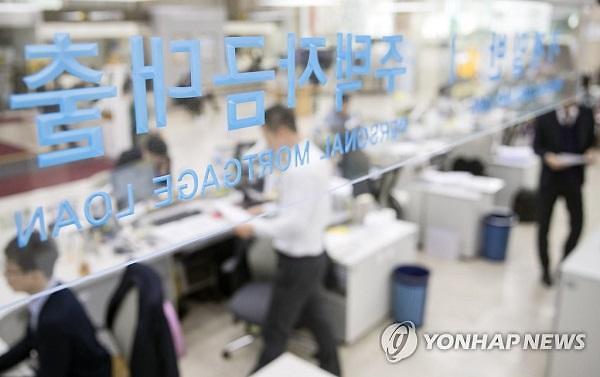The financial authorities have decided to ease the liquidity coverage ratio (LCR) of banks and extend the grace period for applying the loan-to-deposit ratio for all financial sectors. The measures to ease the credit limit between subsidiaries of financial holding companies, which expire at the end of June, will also be extended until the end of September. This measure is interpreted to maintain the active role of supporting the real economy in the financial sector, such as extending the loan maturity and repayment delays for small business owners and SMEs.

[사진=연합뉴스]
The Financial Services Commission and the Financial Supervisory Service held a regular meeting on the 8th and announced on the 9th that they will pursue a’financial regulation flexibility plan’.
First, the deadline for the bank’s foreign currency and consolidated LCR mitigation measures will be extended from the end of this month to the end of September. The financial authorities are applying a reduction in foreign currency LCR from 80% to 70% and integrated LCR from 100% to 85%.
LCR is the ratio of high-liquidity assets divided by net cash outflows for one month, and is a representative liquidity regulation applied to banks. The higher the LCR, the longer the bank can survive with its own capacity, even if a deteriorating funding situation occurs.
This measure is expected to relieve the troubles of commercial banks’ liquidity management. This is because the LCR of major banks as of the end of last year was 91.28~91.4%, below the existing lower limit of 100%.
The deregulation period for the ratio of balances of loans to deposits (hereinafter referred to as the deposit-to-deposit ratio), which was scheduled to expire at the end of June, will be extended in all financial sectors by the end of this year. Banks that are regulated to within 100% of the loan-to-deposit ratio can be exempted from sanctions for violations within 5 percentage points by the end of this year. Sanctions are also exempted if the deposit-to-deposit ratio of savings banks and mutual finances violates the existing regulations (within 80-100%) by the end of this year by 10%.
In the case of banks, the deadline for adjusting the weight of individual business loans is also extended by three months. Accordingly, by the end of September, the bank will receive only 85% of the existing 100% of the weight of individual business loans.
The time limit for temporarily easing the credit limit between subsidiaries of financial holding companies will also be extended for an additional three months from the end of June to the end of September. Earlier, the financial authorities increased the credit limit between subsidiaries in financial holdings by 10 percentage points. Accordingly, the credit limit between subsidiaries in financial holdings has increased from 10% to 20% of equity capital. The total credit contribution can also be increased from 20% to 30%.
In addition, △Exemption from sanctions for violations within 10% points of the liquidity ratio of savings bank/card/capital companies △Exemption from sanctions for violations within 5% points of the obligatory loan ratio (30-50%) within the savings bank’s business area are also all at the end of June. The deadline is postponed until the end of this year.
An official from the Financial Services Commission explained, “We decided to extend the period of financial regulation easing in comprehensive consideration of the trends in international discussions and the necessity of strengthening the real economy support capacity of the domestic financial sector.” did. “We will establish a policy judgment system for the phased normalization of Corona 19 countermeasures to provide market participants with situational diagnosis and response directions on a regular basis.” I will check it out,” he added.
©’Five-language global economic newspaper’ Ajou Economics. Prohibition of unauthorized reproduction and redistribution
